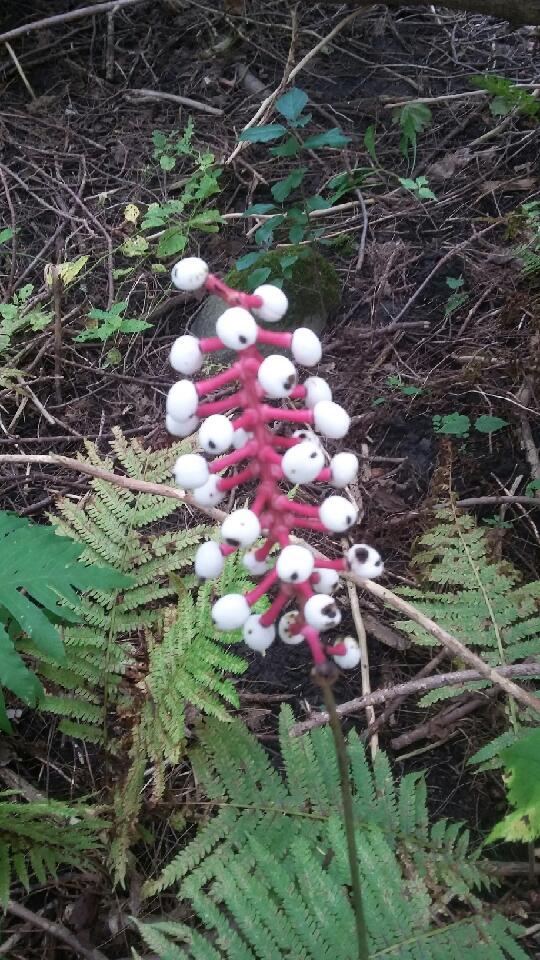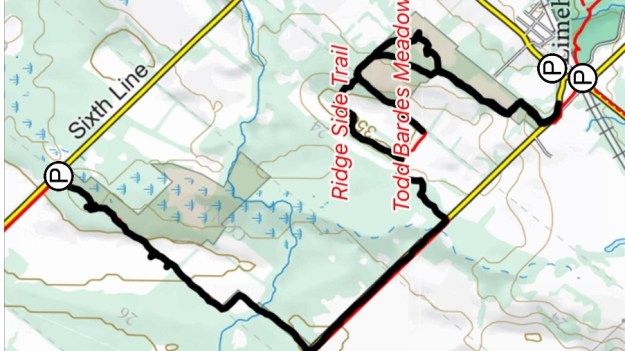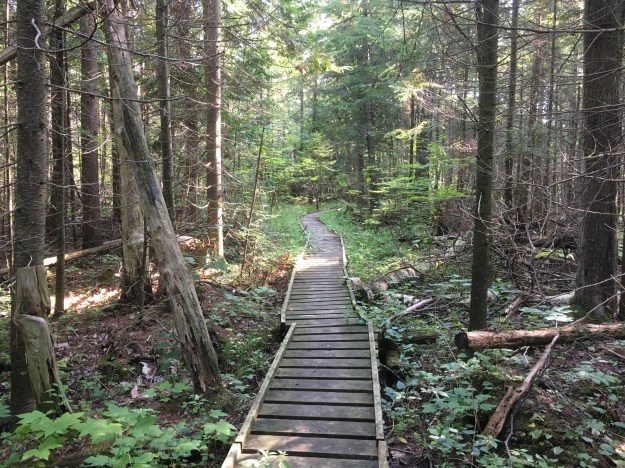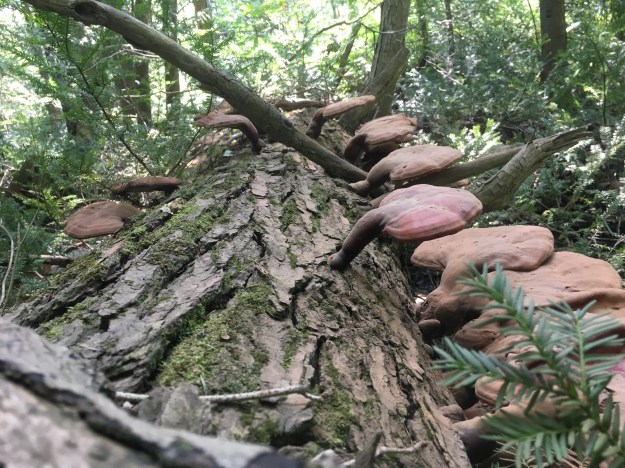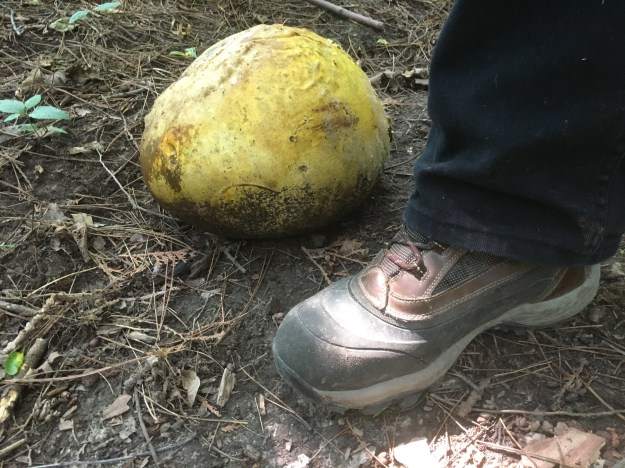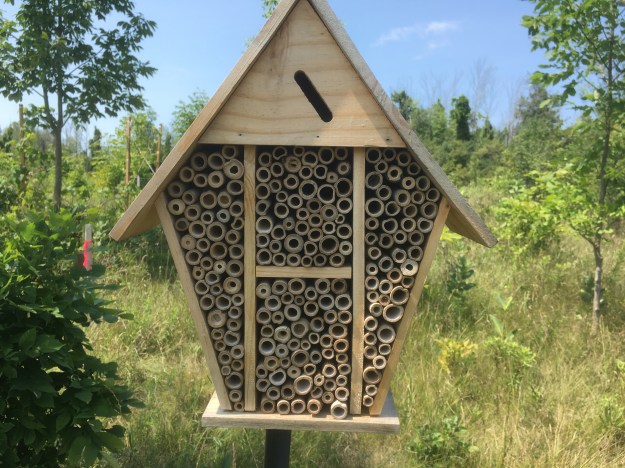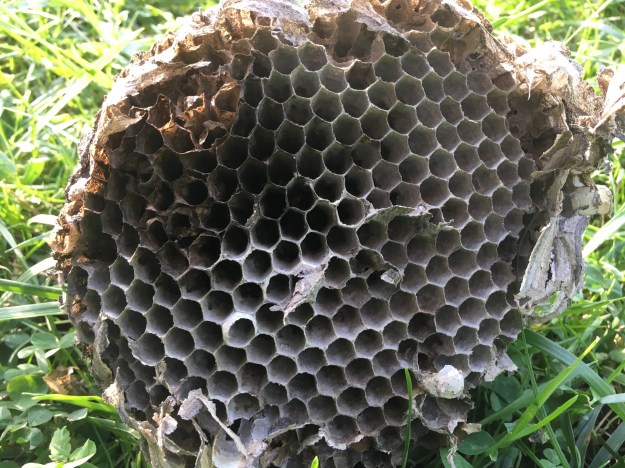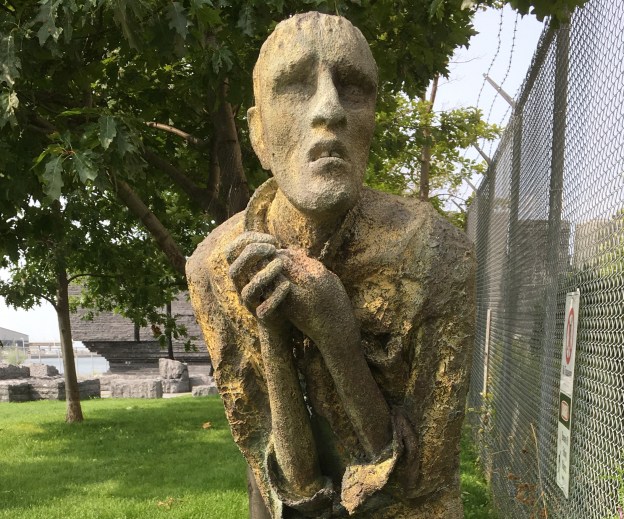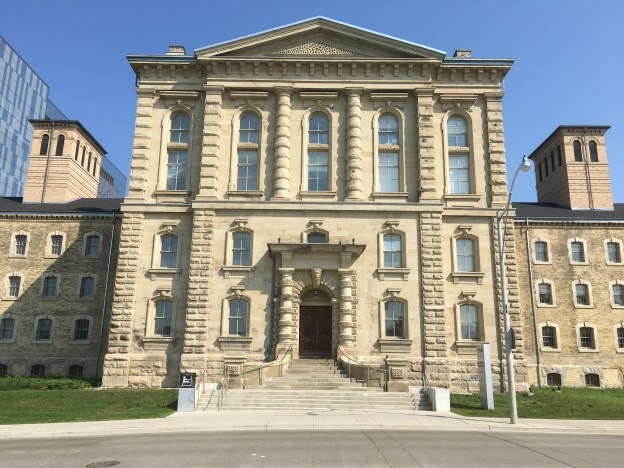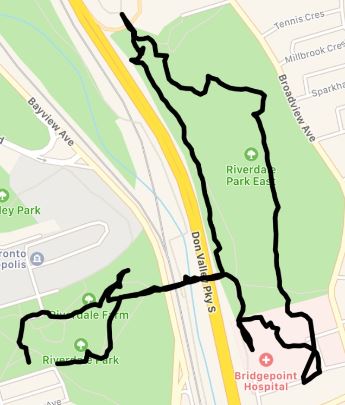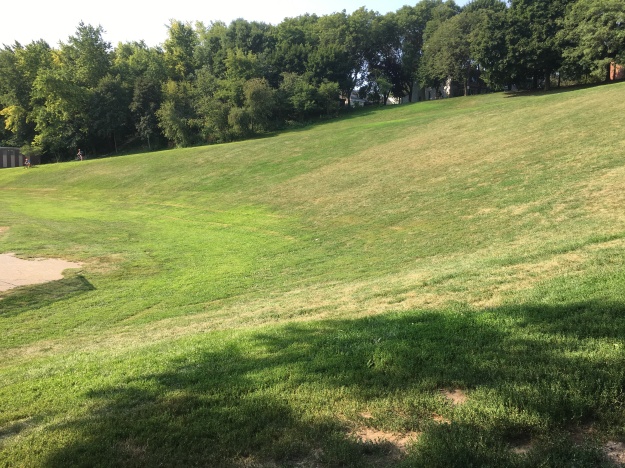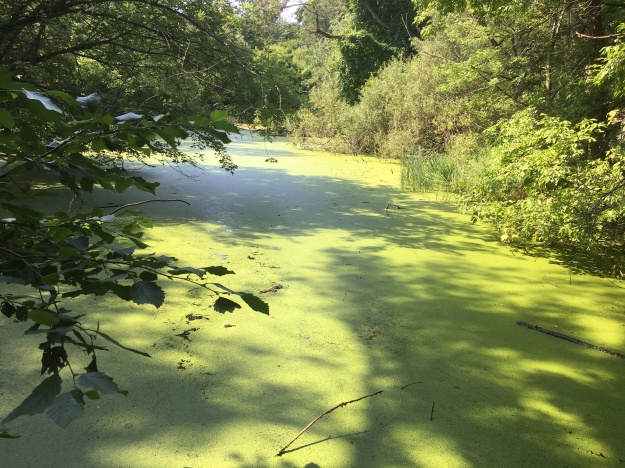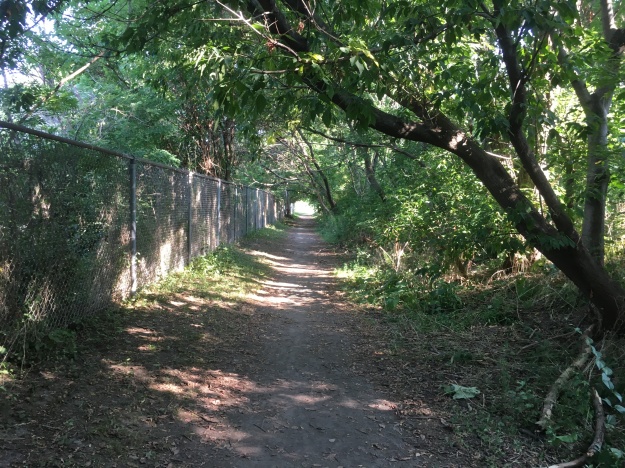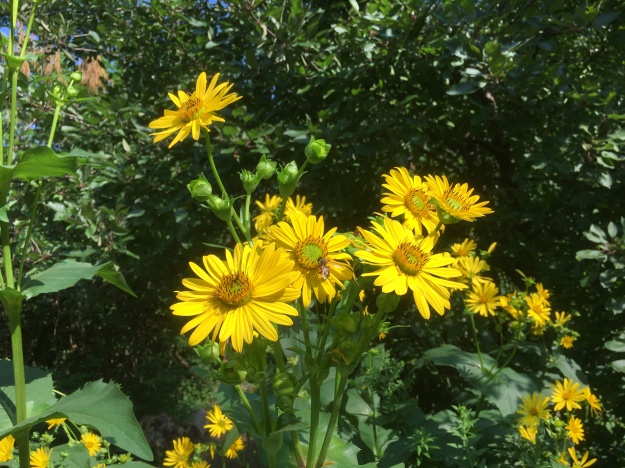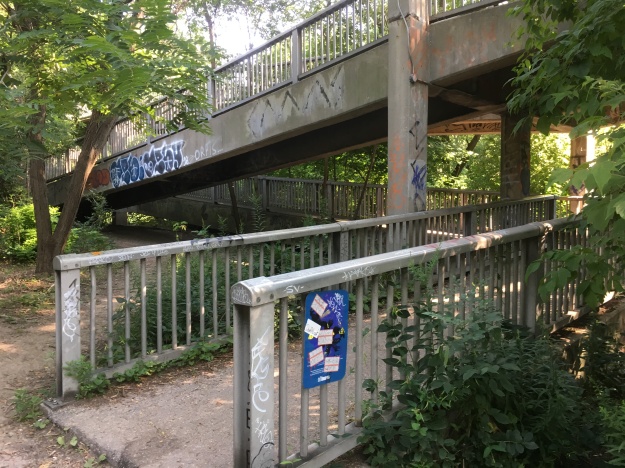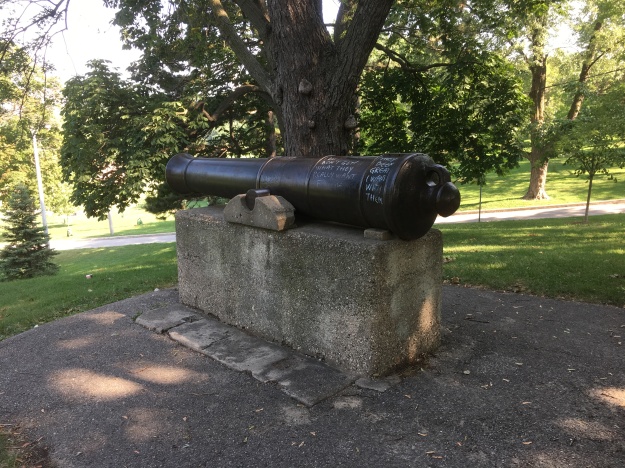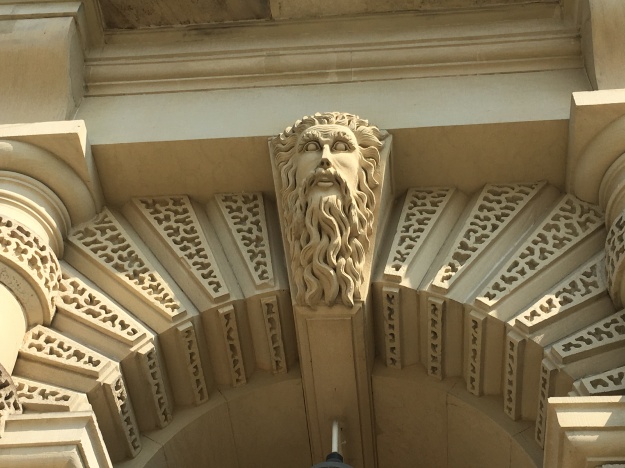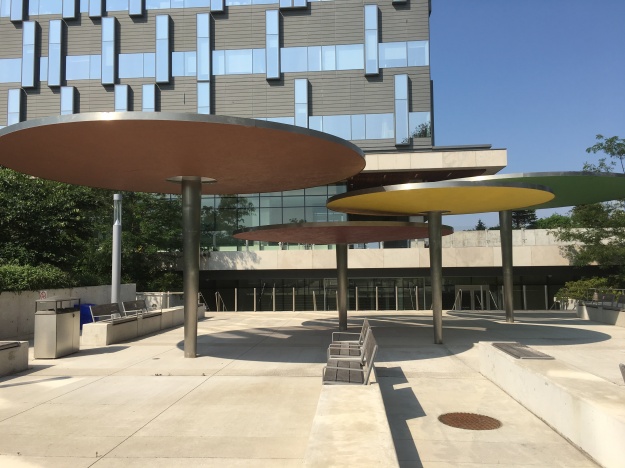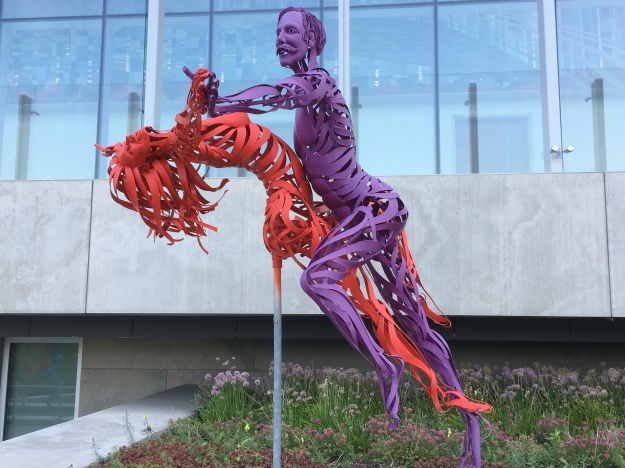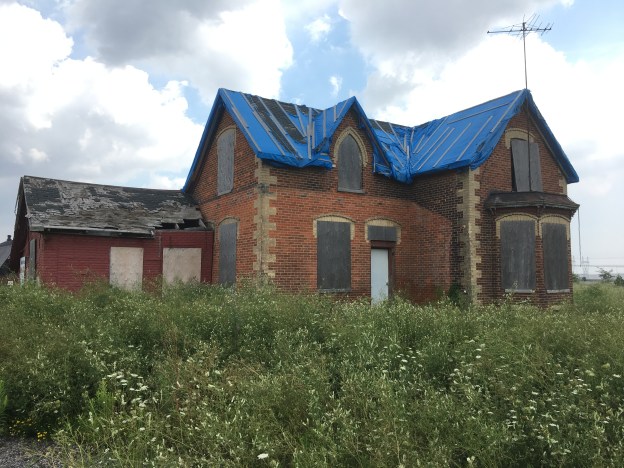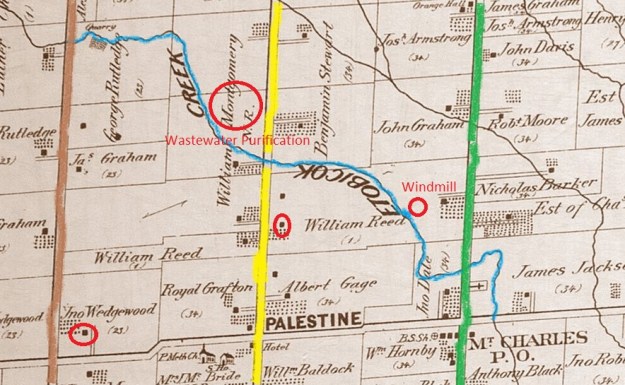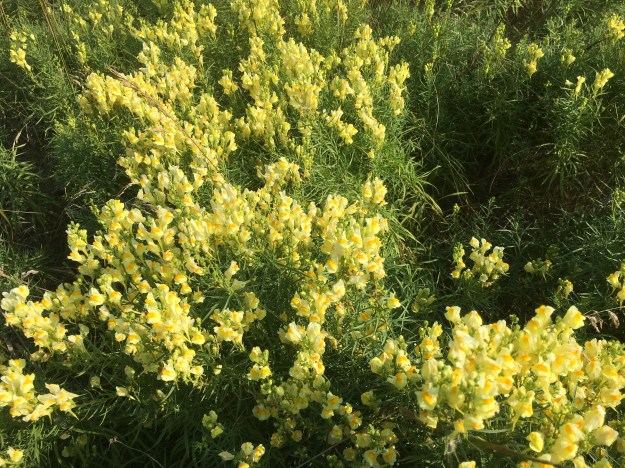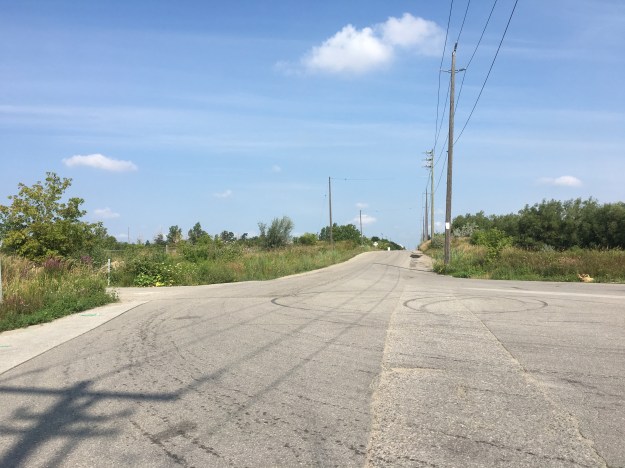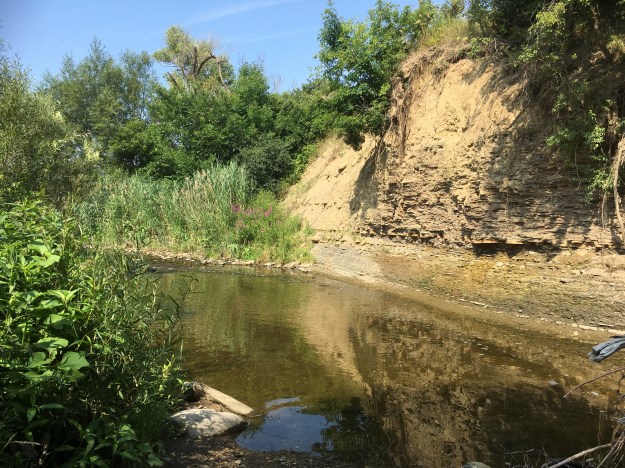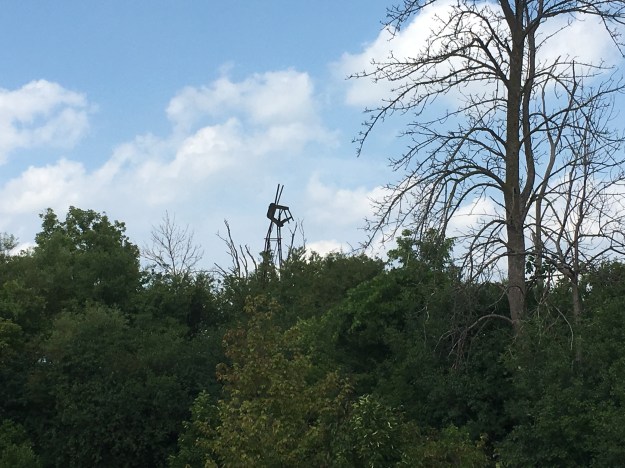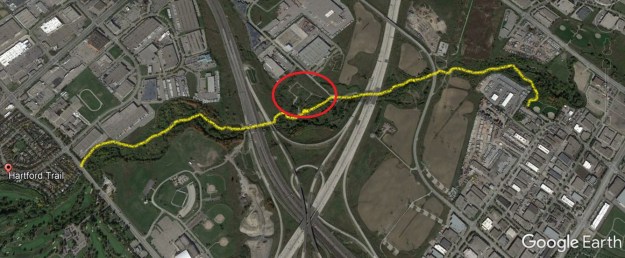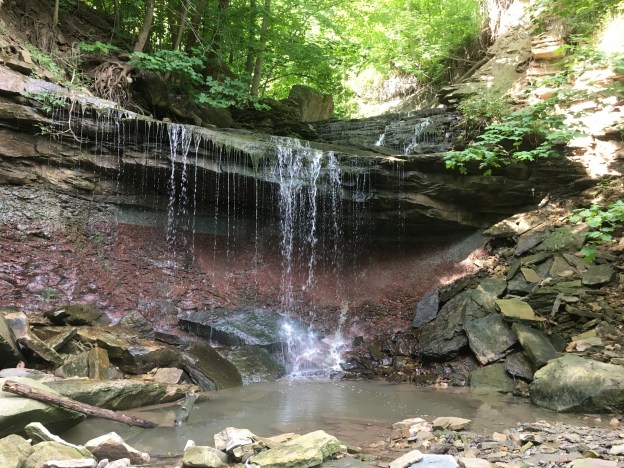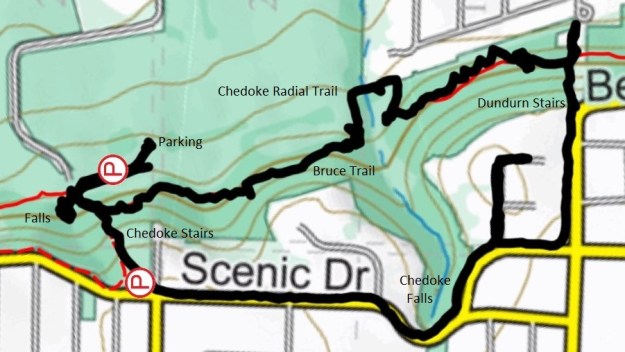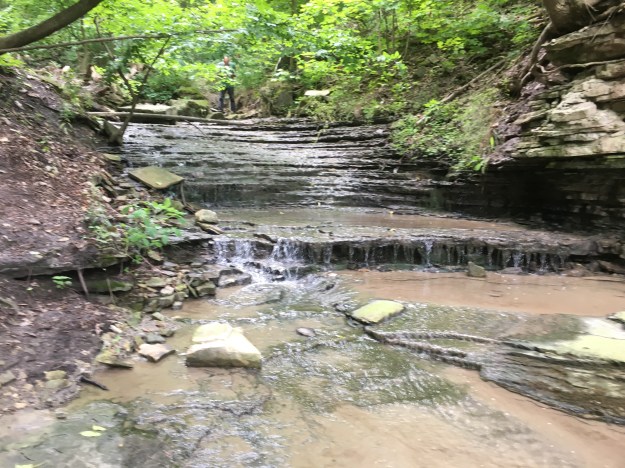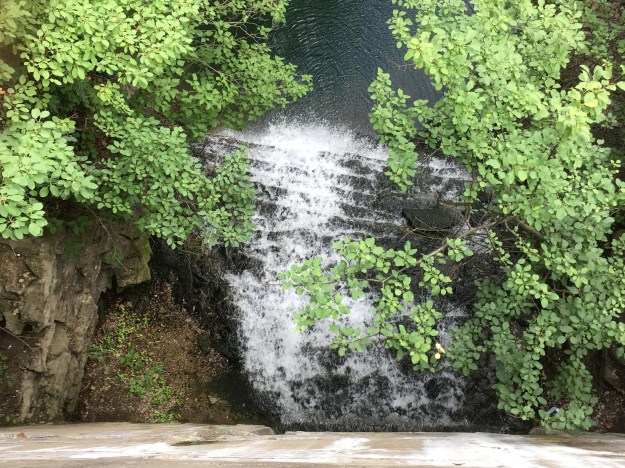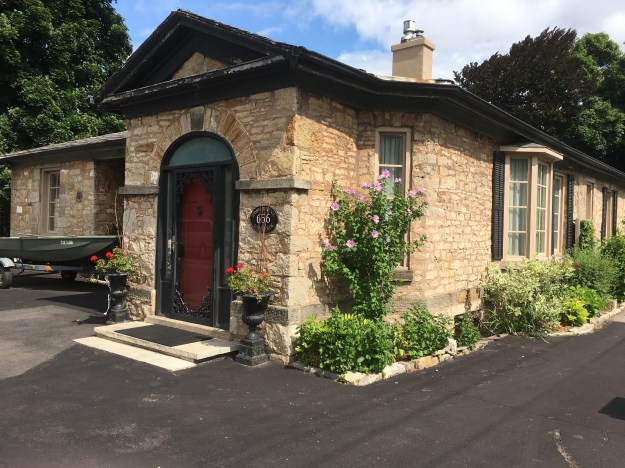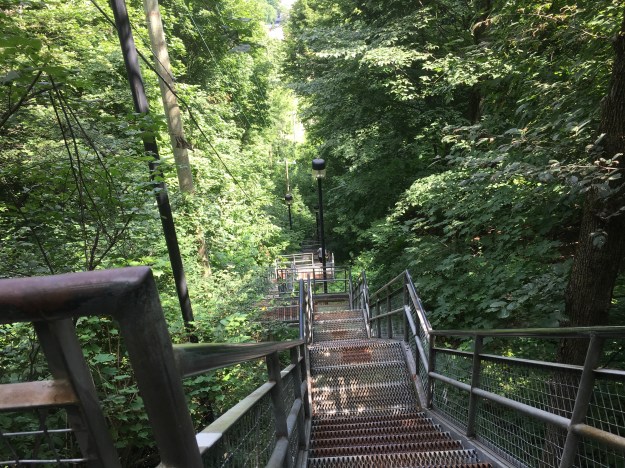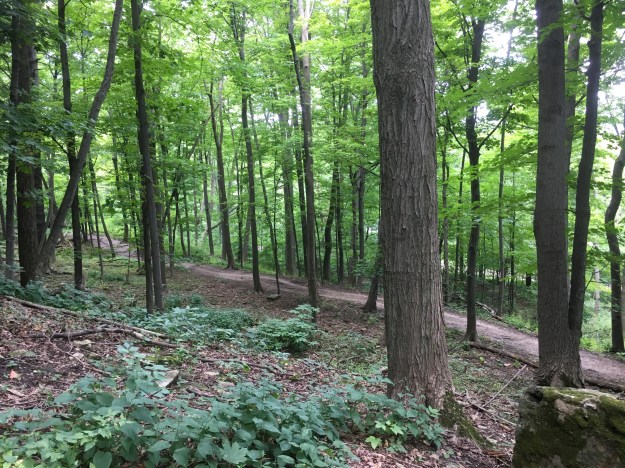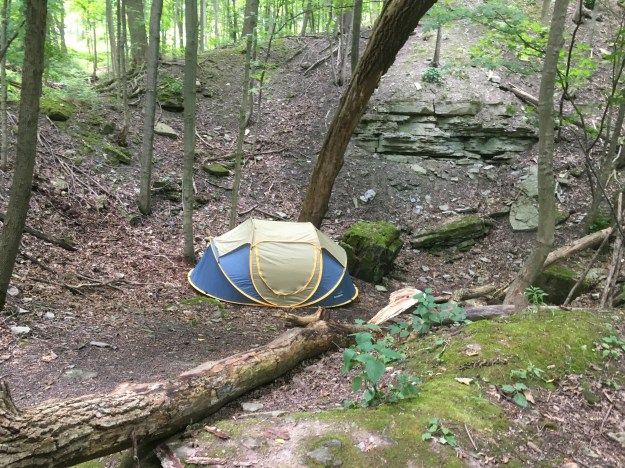Sunday, August 19, 2018
Between 1845 and 1849 the Irish Potato Famine claimed 1,000,000 to 1,500,000 lives and caused a mass emigration from the country. Many of the refugees came to Montreal and Toronto seeking free land and a chance to provide for their families. Arriving in Toronto the ships docked at The Queen’s Pier (also known as Queen’s Wharf and today Bathurst Quay). This was the third wharf in the city built by the military and it stood near the mouth of Garrison Creek at Fort York. The wharf was buried in 1917 as part of a large in-filling project and is today remembered by Queen’s Wharf Road which runs where it used to extend into the lake. The 1842 map below shows the wharf at the foot of Bathurst Street with the Garrison Hospital and the military cemetery, Victoria Square both circled. This is what the city would have looked like when the refugees arrived.
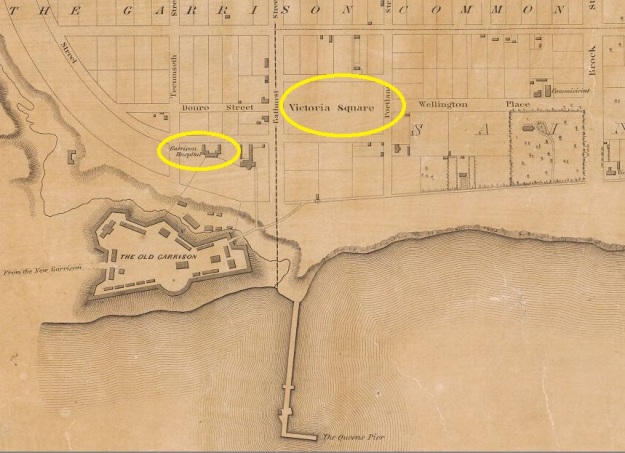
The idea for Ireland Park started when 7 statues were placed near the dockside in Dublin, Ireland in 1997. This was the 150th anniversary of the famine. The Toronto park opened ten years later on June 21, 2007 with the president of Ireland doing the honours. The Irish sculpture is known as Departure while the Toronto one is called Arrival. The seven statues in Ireland have been reduced to five in Toronto signifying the horrible loss of life that occurred. The first statue is a triumphant man who stands with his arms raised in thankfulness as he surveys the city of Toronto across the water. In 1847 there were only 20,000 people in Toronto but they will handle 38,560 refugees, many of whom will pass through the hospital to the graveyard.

A second statue is of a pregnant lady who stands looking up and clutching her belly. She faces a new life in a new land with a new life inside her. Like the others, she looks like she has worn the same clothes for the entire journey and that they may not have been the best to start.
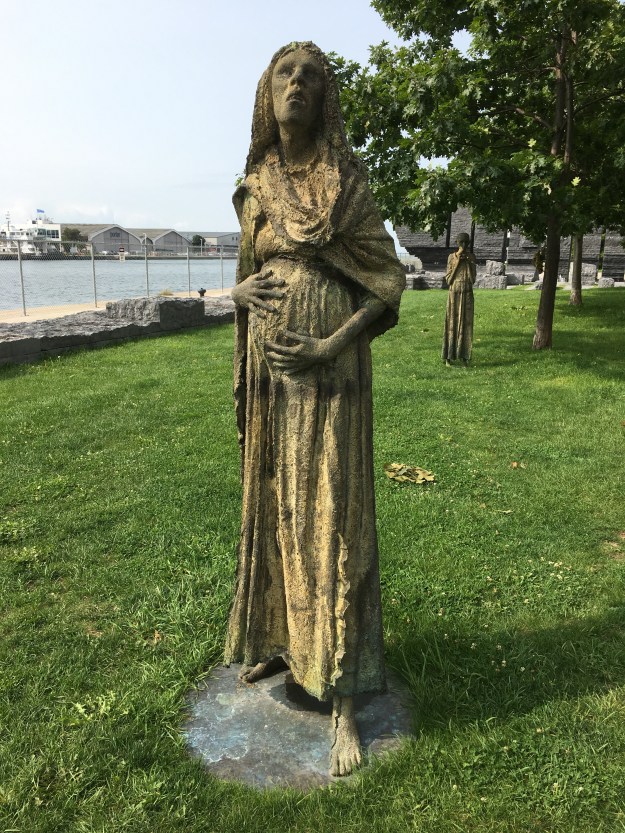
The little boy that stands to the rear of the woman appears to be unsure of what the future holds as he timidly clutches his hands before himself. He may represent those children who arrive alone, having lost their family either on the journey or shortly after arriving.

This individual is known as Pius Mulvey and was inspired by a character in the book Star of the Sea by Joseph O’Connor.

The fifth sculpture depicts a woman lying on the ground. She is in the last moments of life and represents the hope that was never realized for so many. Seven departed, five arrived and only four survived to become part of the fabric of the city.

The emigrants that fled from Ireland in 1847 were packed into crowded ships with poor hygiene for weeks during the passage. The result was an outbreak of typhus on the ships with so many dying on board that they became known as coffin ships. Upon arrival, the sick were taken to the Garrison Hospital. When this facility was full they were put into fever sheds. Within weeks of arriving 1186 of them had died and some were taken to the burial grounds at Victoria Square. The limestone for the wall pictured below was quarried in Kilkenny, Ireland and stands in the park as a tribute to the people who perished after they arrived in Toronto.
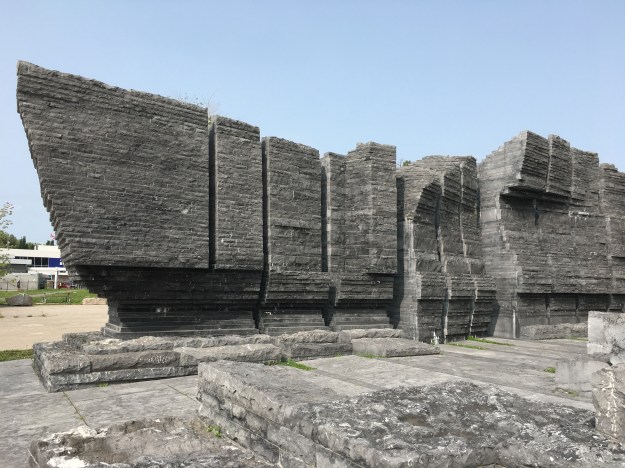
So far, the names of 675 of the people who died upon arrival have been recovered and engraved on the walls. The names can be found in the narrow slots between the stones.
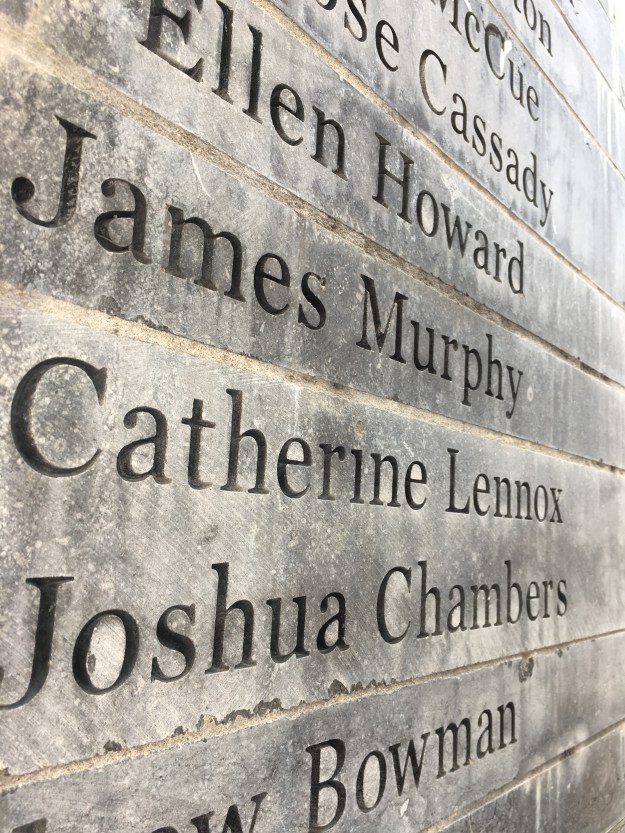
The tower of glass bricks represents hope and is lit up at night. The spaces between the sections of limestone wall where the names are carved are also lit at night to illuminate the names. After dark, spotlights on the statues cast eerie shadows onto the abandoned silos behind. The silos represent storage facilities for grain during abundant times and stand in contrast to the poverty that the refugees were fleeing from.

The Canada Malting Company located a set of concrete silos at the foot of Bathurst Street in 1928. The waterfront had been used for heavy industry for decades and at one time Polson’s Shipbuilding Yards were located here. Polson’s Pier in The Port Lands is named after this enterprise. Storage silos had disappeared from the city because they were made of wood and had a lifespan of about ten years due to the fact that they were severe fire hazards. The Canada Malting Company used concrete silos to store barley in before it was turned into malt. The original silos near the lake were 120 feet tall and more storage was added in 1944 in the form of 150-foot tall silos.

The malt was sold for beer and other uses and the operation continued until 1987 when it was closed. The city has spent the last 25 years looking for a good way to re-purpose the silos as they have a heritage designation being one of the last two remaining on the waterfront. Some of the silos have been demolished and the remaining ones are crumbling badly but suggestions for their preservation include turning them into a luxury hotel. It has also been suggested that they may make a good hotel for the dead in a mausoleum with room for 6,500 coffins and niches for an additional 5,000 urns.

This immigrant statue surveys the skyline of Toronto and raises his arms at the prospects before him. It would have looked considerably different in 1847 without the towers crowding out the shoreline.
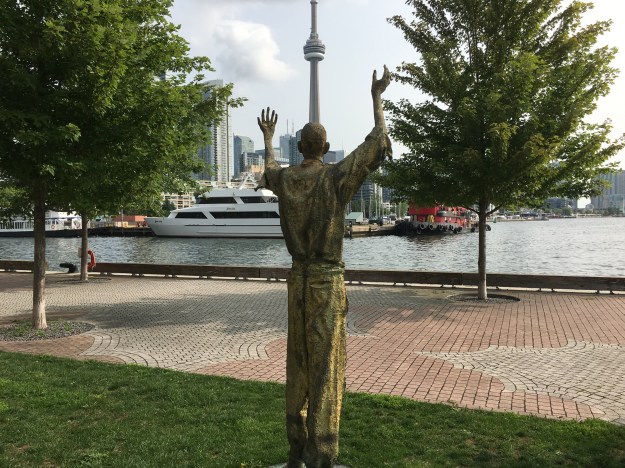
Ireland Park is a very small location with a very big story to tell and because it is hidden there was no one here during my visit making it perfect for contemplation of this chapter in our history. It also looks like an interesting place for an evening visit to see the lighting.
Google maps link: Ireland Park
Like us at http://www.facebook.com/hikingthegta
Follow us at http://www.hikingthegta.com
